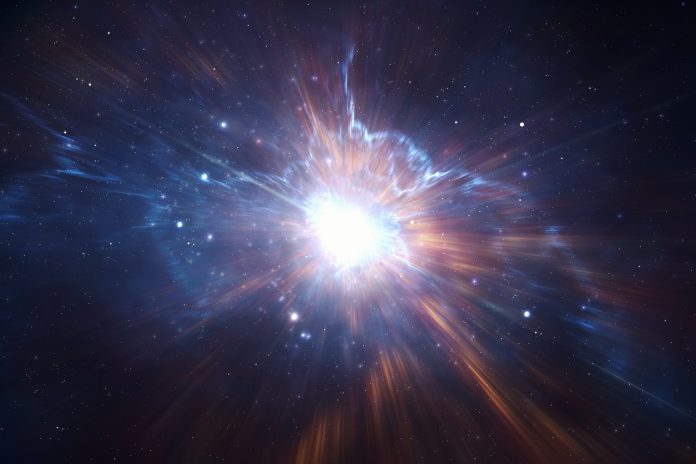A team of astrophysicists led by Northwestern University has solved the cosmic mystery behind the brightest gamma-ray burst (GRB) ever observed, known as GRB 221009A, named the B.O.A.T. “brightest of all time”
Detected in October 2022 and located 2.4 billion light-years away in the constellation Sagitta, this gamma-ray has left scientists curious about its origins.
Looking at the aftermath of a historical event
Led by Peter Blanchard from Northwestern’s Center for Interdisciplinary Exploration and Research in Astrophysics (CIERA), the team used NASA’s James Webb Space Telescope (JWST) to confirm that the B.O.A.T. was triggered by the cataclysmic collapse and explosion of a massive star, resulting in a supernova.
The team did however encounter something unexpected during their investigation. Despite expectations of finding traces of heavy elements like platinum and gold within the aftermath of the B.O.A.T., their extensive search found no signatures. This absence challenges existing theories on the origins of heavy elements in the universe.
Blanchard explained, “We did not see signatures of these heavy elements, suggesting that extremely energetic GRBs like the B.O.A.T. do not produce these elements.” This finding shows the complexity of cosmic chemistry and highlights the need for further exploration to unravel the mysteries of element formation.
The challenges faced during these findings.
Due to the brightness of the GRB, the supernova’s signature was initially obscured. Blanchard and his team waited for the cosmic glare to reduce before examining the B.O.A.T.’s aftermath with the JWST.
The supernova accompanying the B.O.A.T. appeared relatively ordinary in brightness compared to less energetic GRB-associated supernovae.
Absence of heavy elements
The absence of heavy elements in the supernova suggests that alternative sources beyond GRBs might be responsible for their creation. Astrophysicists have theorised that rapidly spinning, massive stars, like the one responsible for the B.O.A.T, could be potential contributors to heavy element production.
The research team’s efforts were extended by observations from the Atacama Large Millimeter/Submillimeter Array (ALMA) in Chile, enhancing their understanding of the B.O.A.T.’s characteristics.
Blanchard stated, “This is crucial information as we continue to try to pin down where the heaviest elements are formed.” Future observations with the JWST aim to unveil whether similar GRBs can show the origins of heavy elements in our universe.











